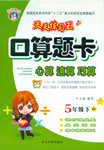题目内容
Every autumn, as families across the United States get ready to send their kids to college, the economics of higher education receive renewed attention. College is expensive and becoming more so in the U. S. The situation raises two questions: Why does it cost so much, and how can students and their families afford it?![]()
Several studies published in the past few weeks reflect on these questions. The findings provide comfort to poor families.![]()
First, it appears that only the minority actually pay the "high price". A study by the US Education Department's National Center for Education Statistics found that 55 percent of college students last year received some forms of help--scholarships, loans(贷款)or jobs.![]()
Other factors are also at work. The government has increased the size of its grants (补助金)to lower-income students. Grants, unlike loans, don't have to he repaid and are awarded only to college students who have not earned a bachelor's or professional degree.![]()
At the same time, most colleges are spending more on undergraduate education than they are collecting in tuition fees. A study, which is part of the Williams College Project on the Economics of Higher Education, reaches the conclusion that on average colleges “subsidize (赞助)” their students. The results of these studies, however, leave unanswered the questions of whether educational costs are higher than they need to be. Some experts argue that much of the college cost results from educational competition for fame, students and facilities.![]()
This puts upward pressure on tuition, hut many colleges feel that good fame will enable them to attract students even if they charge them more.![]()
Therefore, until something important changes in the marketplace, costs seem likely to continue rising. And American families will continue to beat down the doors of the high price "college in the end.![]()
1.From the fourth paragraph of the passage we can conclude that _______.![]()
A.American families earn only a little money every year![]()
B.American families pay little attention to education![]()
C.American students often have to stop their studies![]()
D.American colleges have different ways to help poor students![]()
2.In the writer's opinion, for students from lower-income families, the best way is ________.
A.to find a good job and make money
B.to borrow money from the banks
C.to ask for grants
D.to borrow money from friends
3.It can be inferred that in America _______.
A.famous colleges only accept rich students.
B.famous colleges charge their students more money
C.the government spends little money on education
D.families often break the doors of colleges
4.The writer of this passage seems to hold the opinion that _______.
A.college fees rise too fast for poor families.
B.poor people should borrow money from banks
C.poor people don’t need to send their children to college
D.colleges should get more money to improve themselves
DCBA
【解析】1. 第四段讲述美国大学生有很多不同的方法支付学费,比如奖学金、贷款和打工。
2. 从文中关于补助金的描述判断,它的对象是低收入的还没有拿到学位的在校学生,不需要偿还,可见它比贷款或奖学金(需要学习与表现好)或打工都好。
3.文中说有少数学生的确支付昂贵的学费,还说名气高的大学增加学费可以吸引学生,由此判断名牌大学的学费高。
4. 从全文内容判断本文的中心是说现在大学学费太贵,然后谈论学生如何支付大学学费。

 新课标阶梯阅读训练系列答案
新课标阶梯阅读训练系列答案 口算心算速算应用题系列答案
口算心算速算应用题系列答案Modern man has cleared the forests for farmland and for wood, and has also carelessly burned them. More than that, though, he has also interfered (干涉) with the invisible bonds between the living things in the forests. There are many examples of this kind of destruction. The harmfulness of man’s interference can be seen in what happened many years ago in the forest of the Kaibab plateau (凯亚巴布高原) of northern Arizona. Man tried to improve on the natural web of forest life and destroyed it instead.
The Kaibab had a storybook forest of large sized pine, Douglas fir, white fir, blue and Engelmann spruce. In 1882 a visitor noted, "We, who ... have wandered through its forests and parks, have come to regard it as the most enchanting region it has ever been our privilege (特权) to visit.” This was also the living place of the Rocky Mountain mule deer. Indians hunted there every autumn to gather meat and skins. The forest also had mountain lions, timber wolves and bobcats that kept the deer from multiplying too rapidly.
Then, in 1906, President Theodore Roosevelt made the Kaibab a national game preserve. Deer hunting was forbidden. Government hunters started killing off the deer’s enemies. In 25 years’ time, 6,250 mountain lions, wolves and bobcats were killed. Before the program, there were about 4,000 deer in the Kaibab, by 1924, there were about 100,000.
The deer ate every leaf and twig they could reach. But there was not nearly enough food. Hunting of deer was permitted again. This caused a slight decrease in the deer herd (鹿群),but a far greater loss resulted from starvation (饥饿) and disease. Some 60 percent of the deer herd died in two winters. By 1930 the herd had dropped to 20,000 animals. By 1942 it was down to 8,000.
【小题1】The destruction of the environment of the Kaibab resulted from
| A.interfering with natural cycle of forest life |
| B.turning the forest into cultivated land |
| C.forest fires caused by man’s carelessness |
| D.cutting the trees for building materials |
| A.an animal | B.a tree | C.a mountain | D.a game |
| A.25 | B.6 | C.12 | D.18 |
| A.the cold | B.the organized kill |
| C.the poor management | D.the shortage of food |
I grew up in New Hampshire, a small town in South Canada, where in my father’s words for the seasons were “Spring, Summer, Fairtime and Winter!” At that time, a week-long fair was held in the town every autumn. Thousands of people from other towns came to sell and buy things. It was the busiest time of the year.
When “Fairtime” came, my grandma became the most “useful” and busiest person of the family. Grandma was a kind, well-educated old lady. She was good at cooking. All her rrelatives liked the foodshe cooked. During “fairtime”, they would come to live in her house and have meals there. Grandma was always happy to look after them.
Year after year, many people moved to big cities. There was no loner “Fairtime”. Grandma became very old and was gradually going blind. My parents and I moved to live with Granma in her house. We did our best to make her day-to-day life as comfortable as possible. I was at high school then. What I often did at home was to help Grandma with the daily newspaper’s crossword puzzle. However, she didn’t look happy. She often sat in her room for hours, without saying a word.
To attract people to move back, the Town Hall decided to reopen the Fair. One day, when I came back room school, I saw Grandma wearing her glasses, washing the dishes in the kitchen. With a big smile on her face, she looked a lot much younger. She told me that her two nieces would come. “They said the food I cooked was very delicious and they want to stay in my house again.” Grandma said happily. “They will stay here for one week and we can have a big party. That must be the busiest week I’ve had in years!”
I suddenly realized that Grandma didn’t want to be looked after. She wanted to be “useful”, appreciated and helpful.
1.Thousands of people came to the town to __________ at the Fair.
A. enjoy Grandma’s food B. sell and buy things
C. learn to cook D. have a big party
2.Why was Grandma unhappy?
A.She was too busy. B. No one lived with her.
B.She was not “useful”. D. She couldn’t see anything
3.Which of the following is NOT TRUE according to the passage?
A. Grandma was good at cooking
B. Many people moved to big cities.
C. Grandma didn’t like “Fairtime”
D. Grandma was a kind old lady.
4.What’s the best title for the passage?
A. Fairtime B. My “Old” Grandma
C. A Small Town D. Grandma’s Family